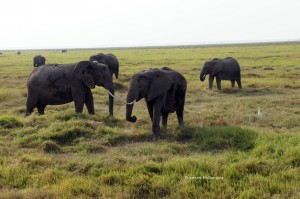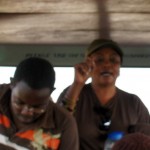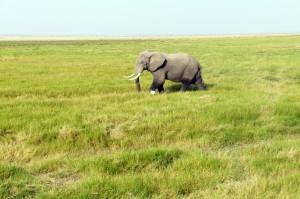Tusks and Tears

Driving through the entrance to Amboseli National Park, in southern Kenya, the vehicle was filled with suspense as we kept our eyes fixated on the green swampy landscape. And then, elephants. Wild elephants everywhere. The vehicle fell silent as we watched in awe the enormous gray figures swaying, ears flapping, tails swishing, tusks shining. Tears welling in our eyes in the euphoria of the moment.
Every single one of us had seen elephants in captivity at some of the best zoological parks in the world. But nothing, absolutely nothing could compare to seeing so many magnificent elephants living in the shadow of Kilimanjaro. Stoic creatures. Beautiful. Their flashy white tusks gave off an ethereal glow against the backdrop of bright green and blue sky. Tusks gleaming in the daylight, a source of their beauty and of their demise.
The Maasai have coexisted with wildlife for generations. The warriors rarely killed elephants because they believed the elephants to have souls just the same as we humans. But the drought of 2009, one of the worst in recent
times, left the Maasai struggling with their loss of cattle and competing with the elephant for water. The new need for money changed the tolerance for the tuskers and to make matters worse, just across the Tanzanian border were brokers paying cash for raw elephant ivory. A lucrative exchange for the struggling warrior.
The Chinese get a bad rap for a lot of things but when it comes to poaching elephants for ivory, it is deserved. There was almost no poaching in Amboseli for over 25 years before a Chinese company started building a long stretch of highway just north of the park. According to Kenya Wildlife Service, 90% of the passengers arrested for possession of elephant ivory at Jomo Kenyatta Airport are Chinese citizens. And it doesn’t seem to be a coincidence that after the road construction began, four of Amboseli’s bulls with big tusks were poached. The raw elephant ivory can bring as much as $700 per pound if it makes the trip back to China.
So greedy is the desire for elephant tusks, that across the African continent, elephants are being killed at an estimated rate of 1 every 15 minutes. 100 per day, 36,500 per year. Unfathomable.
We watch in reverence while listening to our guide Soila Sayialel, the deputy director of the Amboseli
Elephant Research Project. Soila told us about each of the elephant families, how each individual elephant was named. The elephant’s photo with their name was placed into an identification book that felt more like an elephas family scrapbook of memories than a collection of herd data. Soila’s love for the elephants was clear and her heart as big as the animal she had made her life’s work. She knows each of their names, and her connection is that of deep friendship and love.
What a price to pay for elephant ivory. The murder of a glorious creature just to have trinkets and baubles. How could these objects begin to compare to the value of the life of the elephant? And what true joy could the now defunct piece of tusk bring the new owner and for how long? Soon to be forgotten as it is placed upon a shelf and left to collect dust.
But the elephants remember. The loss of a matriarch or a bull will be devastating to the herd far longer than the carved object will be admired. The elephants mourn their dead and remember the lost loved ones just like we do. Elephants cry, grieve and get their hearts broken. Look into the eye of an elephant and you will see why the Maasai know they have souls. Tears roll down our cheeks. Money really does ruin everything.
Watching the elephants and listening to Soila made me want to never leave Amboseli. I was told, once you visit Africa you will be haunted until you return. I hadn’t give that much thought until I felt Africa tugging at my own heart. Now that I am home, I often close my eyes and imagine being back in Amboseli. The sounds, the smells, the elephants.
The tusks and the tears.
Related articles
- The Power of One Tiny Kitten (conservationcubclub.com)
- African Lions Need Your Signature Now! (conservationcubclub.com)












Ineresting story, Joanne. I wasn’t aware of the Chinese involvement in the ivory trade there.
Fascinating article, Joanne! I’m sad because I didn’t know this was still such a problem in our world. So much for my hope that we were becoming a bit more enlightened as a society… At least articles like these help bring awareness to the problem… Thanks for putting it out there.